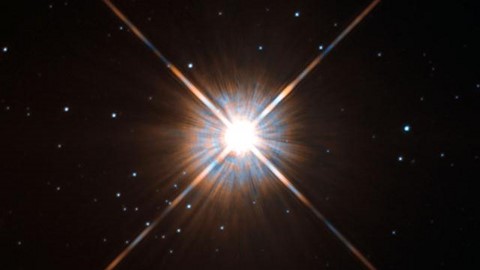Proxima Centauri-b, our nearest exoplanet: update

When exoplanet Proxima Centauri-b was discovered in 2016, there was great hope that one might be able to find life there. Some even came up hoping to use it as a "spare" Earth. The planet revolves around our neighbor-star Proxima Centauri and is closer to Earth than any other exoplanet.
Exoplanets are planets which revolve around stars other than our Sun. Exoplanet Proxima Centauri b is about 4,2 light-years distant from Earth. Lately, scientists have even tried to calculate how many humans one would have to put aboard a spaceship in order to conveys humans over there – keeping in mind that the trip would last over 6300 years.
This remains a thought experiment. Meanwhile, scientists are seriously trying to figure out if life would be possible on this exoplanet. They have lately conceived of several climate scenarii and simulated them in computer models. As a result, it seems seriously imaginable that Proxima Centauri-b is fulfilling important prerequisites for the presence of life, they write in the magazine Astrobiology.
Shortly after the discovery of this exoplanet in 2016, scientsts had speculated about the existence of an giant ocean there. Meanwhile, doubts have arisen – among others, due to the unfavorable characteristics of the star around which Proxima Centauri-b revolves.
Proxima Centauri is a so-called Red Dwarf. The star is relatively small and considerably colder than our Sun. The inhabitable zone around it, where it would neither be to too hot nor too cold for living beings, is situated not far from the star. Where Proxima Centauri-b ihappens to be situated. It needs only 11 days for a full revolution around the star. But the nearness of the star also comes with disadvantages.
Red Dwarves are very active. It ensues that Proxima Centauri b is exposed to strong solar winds, as well as to extreme X-ray and ultra-violet radiation. This violent radiation could have make water that was once present evaporate.
Still, the scientists do not want to exclude that there might be water present on the planet up to this day. One could for instance imagine that Proxima Centauri b was formed at a greater distance of its home-star and that it wandered closer to it over time, they write. This would have least have spared the exoplanet earlier, water-snatching storms.
One may also consider that on Proxima Centauri-b there existed originally ten times more water than on Earth, they add. Even if the massive radiation of Proxima Centauri-b had evacuated 90% of it, there would still exist enough water there today to make a gigantic ocean which would stretch over large parts of the planet.
Hot on one side, cold on the other
But there is a second problem which might make life more difficult on this exo-planet: Proxima Centauri-b rotates around its star in such a way that it always shows the same side to it. Experts worry therefore that – even if there should exist such a gigantic ocean on the planet – the face of it which would be looking away from the star would be continually covered with ice, and the other one would be boiling hot. Between the two zones there would therefore in the end exist only a narrow band with a moderate water temperature.
Basing themselves on this supposition, the scientists modelled the conditions on the planet according to various preconditions: with an earth-like atmosphere, composed mainly of nitrogen and with an atmosphere made up purely of CO2. They additionally calculated in a thicker or a thinner atmosphere than the one on Earth and an Ocean of variying degrees of salinity, expanse and depths.
So that they also found a possible solution for the challenge presented by the fact that one side of Proxima Centauri b is always in the dark:
"What is decisive in our model is a so-called dynamic ocean,” explained Anthony Del Genio from NASA to the webpage Universe Today. In an ocean of this kind, warm and cold water from both sides would flow together and mix."
Under this condition, the simulations showed not only one but several scenarii according to which Proxima Centauri-b could turn out to be friendly to life.
"If the exoplanet has an atmosphere and an ocean, then the ocean will have a counterbalancing influence on the climate – the day side would be cooler than we hitherto assumed, the night side would be warmer", according to Del Genio.
But the scientists cannot be sure of either of this suppositions: neither the existence of an atmosphere, nor the one of an ocean are a proven fact. The scientists hope that in the coming years they will be able to learn more about this distant planet thanks to new telecopes.
Translated from the German by Anne-Marie de Grazia

